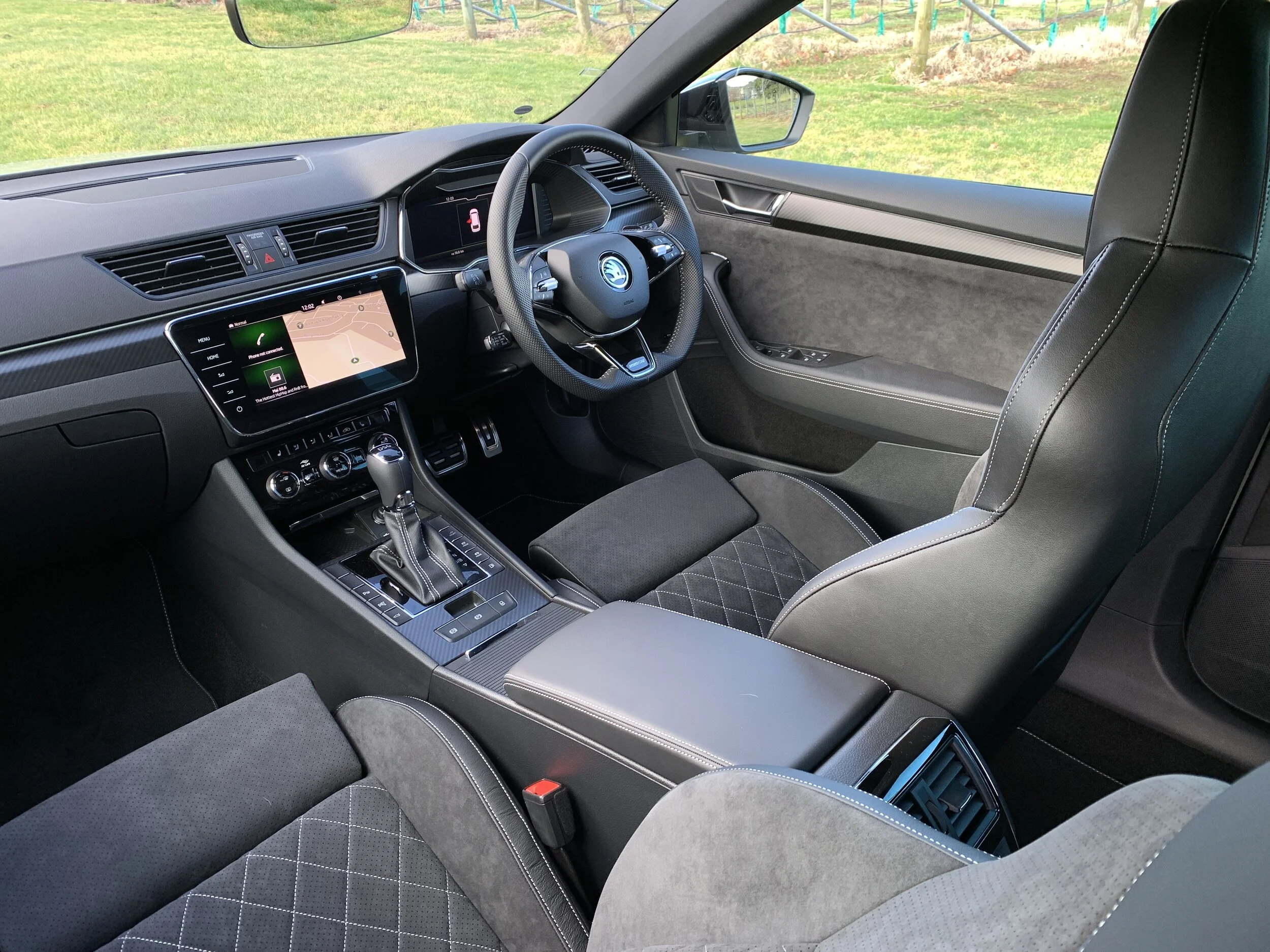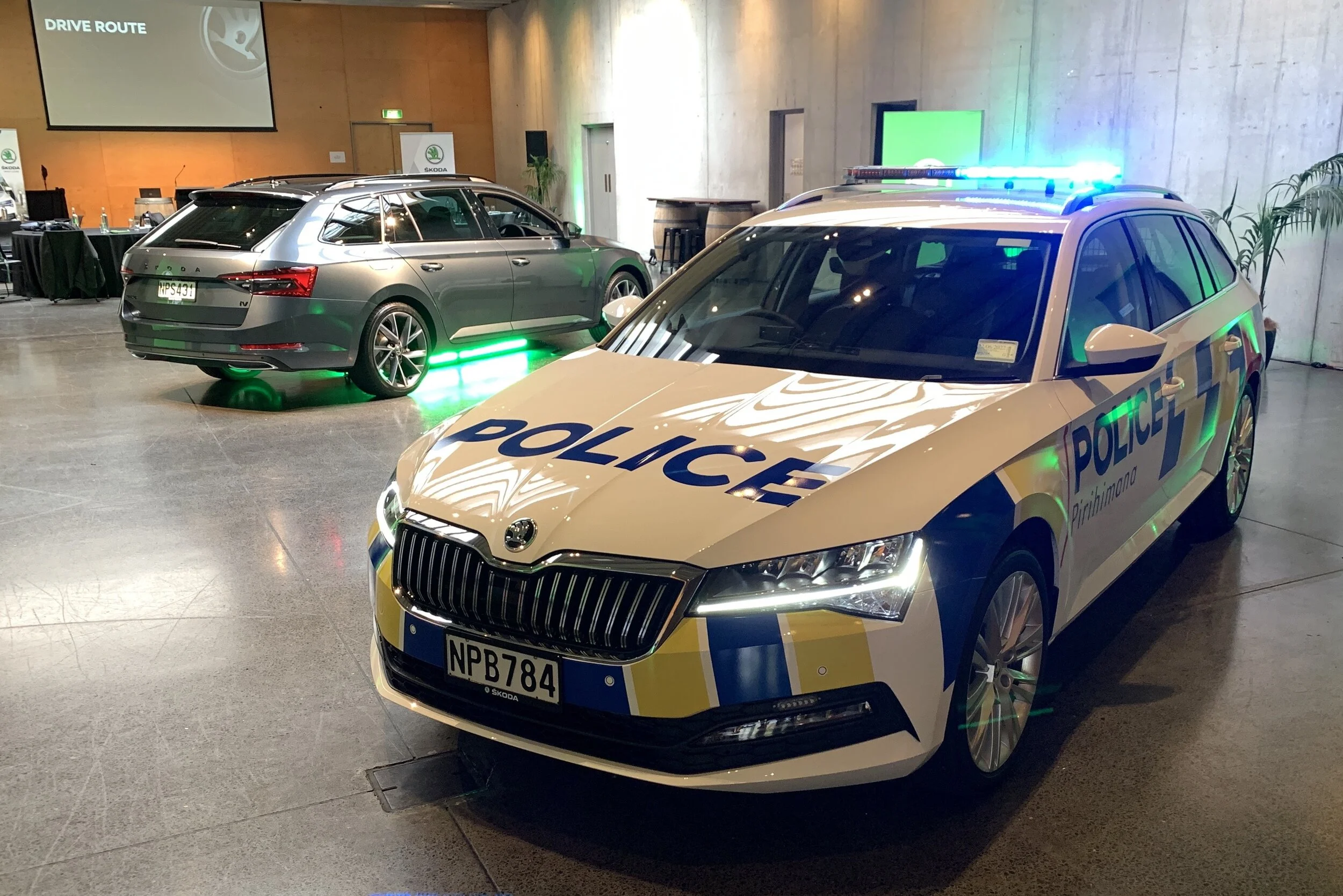Skoda Superb iV first drive review: Ohm land security
/The battery-assisted Superb has landed and a sports-flavoured Octavia equivalent will be here by year-end.
WITH its first fully electric car, the Enyaq, likely still two years away from official local sale, Skoda here is powering up on the introduction of readily-available plug-in hybrid versions of two popular cars.
Kicking off the ‘iV’ sub-brand is its largest car, the Superb, sedans at $71,990 in Style trim and $74,990 in sharper Sportline format with wagon equivalents costing $3000 more.
In a couple of months will come a mains-replenished version of the next-size-down Octavia, with the additional twist of it fronting in a RS performance theme.
All iV cars are front-wheel-drive running a common 1.4-litre petrol engaged with a 12.8kWh battery-fed electric motor, making 85kW in isolation, delivering 62 kilometres’ pure electric range and nifty 0-100km performance (only Superb is so far cited, with 7.7 seconds claimed) in optimal format.
The drivetrain creates 400Nm combined in both car lines but whereas the Superb has an optimal combined power output of 160kW, the Octavia runs with 180kW - the same output claimed for the petrol-pure RS wagon already on sale here. The petrol RS has 20Nm less torque.
Sounds intriguing? Well, plug-in hybrids are certainly in vogue in Europe at the moment, with diesel dying slowly and full electrification mainly still on the horizon.
Feedback out of NZ Skoda owners suggests 68 percent are keen to embrace e-mobility and electric drivetrains and the easy availability of these plug-in types fired up Skoda NZ.
In respect to the latter: With Superb, Skoda NZ general manager Rodney Gillard relates, his team literally made the ‘go’ decision one day and the parent was building the first 100 cars the next.
Although they’re no substitute for the pukka EVs the world is unerringly moving toward, they will stand a good stepping stone for some years yet, he feels.
The variants coming here are hoped to spark significant private buyer interest though Skoda also sees significant potential with fleets keen to enjoy the benefits of cited overall economies of 6.6-6.8 litres per 100km overall - and much lower, around 1.5L/100km, when electric interaction is utterly prioritised – and sub 40 grams per kilometre emissions.
Any catches? Primarily, buyers must also accommodate the inevitable premium that an electric ingredient adds. This estimates at around $8000 for the Superb – which otherwise represents as a 2.0-litre model and, in closest equivalence, would have all-wheel-drive.
Gillard concedes the PHEV Octavia RS might be similarly placed in relationship to the full petrol RS, a $57,990 buy-in, but says talks are continuing.
Implementing a battery and electric drive impacts a bit on towing capacity (1600kg for Superb) and more on kerb weight, the gear adding around 200kg, and packaging.
You have to sacrifice the spare wheel for a repair kit and even then boot capacity on both cars in wagon form reduces by 150 litres (fortunately, these are already models with extra-generous luggage capacity). The Superb also takes five litres’ smaller fuel tank (so, 50 litres) and the Octavia has 15mm higher ride height.
Also, there’s a twist with charging. The car has a Type Two port, but it also uploads electricity at modest rate and certainly cannot continence fast charging. At best it’ll replenish from wholly depleted to 100 percent in three and half hours and, at worst (meaning by three point plug) that’ll stretch to almost eight.
Finally, of course, as with all PHEVs, when the electrical assist runs out and reliance falls to the engine … well, things change.
Nonetheless, there’s interest including from the nation’s largest fanbase, the NZ Police.
Having signed up for 2000 162kW front-drive and 206kW all-wheel-drive Superb wagons as primary response vehicles, it has now expressed interest in considering iV Superbs – which weren’t included in the tender. They’ll probably not be patrol cars but instead find duty in less onerous roles.
Speaking at our preview day of the hybrid Superbs, Inspector Brian Yanko, police fleet manager, says the PHEV model will have to pass muster through testing that goes well beyond being a driving evaluation. There are also many electronic checks and radio frequency testing to ensure compatibility with specialist police communications equipment.
However, he says the model will help Police lower its carbon footprint.
“Not only is this important for NZ Police’s accountability to meet Government requirements and expectations, but it’s also our social responsibility.”
So perhaps there might be a few Superbs out there by year’s end that’ll be a bit different to the hundreds on frontline duty by then.
You’ll need to be sharp-eyed to pick ‘em: The main giveaway for any PHEV is the charging flap for the battery, but here it’s so cleverly integrated, being tucked away behind the radiator grille, there's really only the 'iV' badge on the boot to give the game away.
The upmarket and well-finished interior doesn’t change either, save for some easily overlooked bespoke buttons beside gearstick – yes, not a shifter because it has a DSG gearbox rather than a sappy CVT.
Delve into the menus on the main screen and, yes, you can find a lot of electro-dedicated stuff, including the full involvements that distinguish how different it is when in hybrid, sports and full electric modes.
The driving. Our first stint was a 62km taster, but due to the condition of the drive – mainly 100kmh territory from Manukau, south Auckland, to Clevedon and return – and, ahem, our approach (we felt compelled to try all drive modes) we got to experience the car as it works in state of full charge and also state of battery exhaustion.
When all systems are go, the overwhelming impression is one of refinement and impressive punch; it’s reminiscent of the diesel engine that used to feature in this car for oomphy and smooth step-off. But quieter. Sure, when it's running in electric mode, there's no mechanical noise, yet even when the engine does join in, progress is smooth. Assuming the electric side is also interacting.
Running in hybrid mode elicited good fuel economy on our outward leg, when my colleague did the driving, but he also tried out Sport and while the economy stayed decent, it pushed up the responsiveness.
At the handover, the battery state was still 47 percent, so conceivably we could, with more judicious driving, have made it back with some electron assistance in the bank.
Sadly, not quite. Even though I engaged more frequently in regenerative braking, I still had to make haste, as we were running late for presentations. Two blocks before the launch venue, the battery-fed gubbins quit …
At that moment, the Superb went from being a large car with a large engine feel to a large car with a small engine that, when given all responsibility for forward motion, engaged enthusiastically but also noisily. The moment of transition occurred when I was stopped at a traffic lights and, for a moment, I honestly thought a hotted-up small car had slid up the inside lane beside us. Once on the move, the Superb quietened down but, as we parked at journey’s end, it’s character was definably different to when it had started out.
Short duration running and taking opportunity to keep the battery in some state of charge always, either by plugging in at every stop or as you drive –that process seems pretty efficient, though it won't be good for your overall fuel consumption – is probably the trick, then.
If your daily commute was relatively short, and you can charge up at work, you could conceivably run for days without ever using the petrol engine - which, of course, is the point.
In handling terms, the iV is true to Superb form; steady and solid, with very good ride comfort but not a car to be driven at a great rush. The extra weight is felt and the brake pedal feel during regenerative braking is a bit brusque, but overall it feels beautifully engineered.
Meantime, as much as Skoda is winning an increasing count of private and commercial sector customers, it’s the uniformed fans who are giving it tremendous visibility, Gillard says.
To date 71 Skoda police cars have been delivered and they’ve been working hard; one has already just gone in for its 15,000km service. It’s expected that between 350 and 400 will be delivered by the end of the year, with the aim of around 500 to 550 police vehicles coming in annually for the next three years.






















